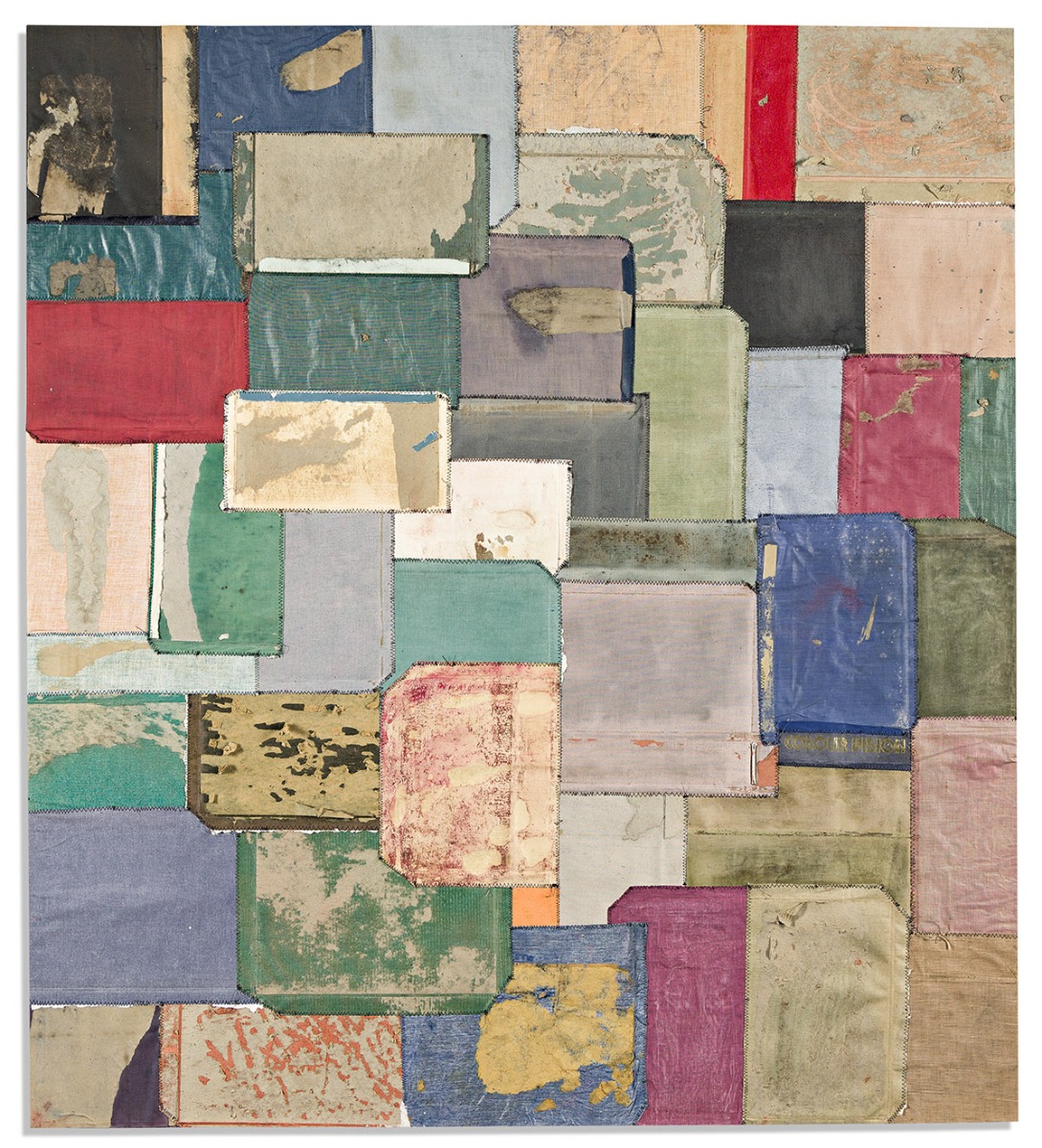
Specialist

Exhibition Hours
Oct 14, 12–5; Oct 16, 12–5; Oct 17, 12–5; Oct 18, 12–5
Sale 2649 - Lot 42
Additional Images
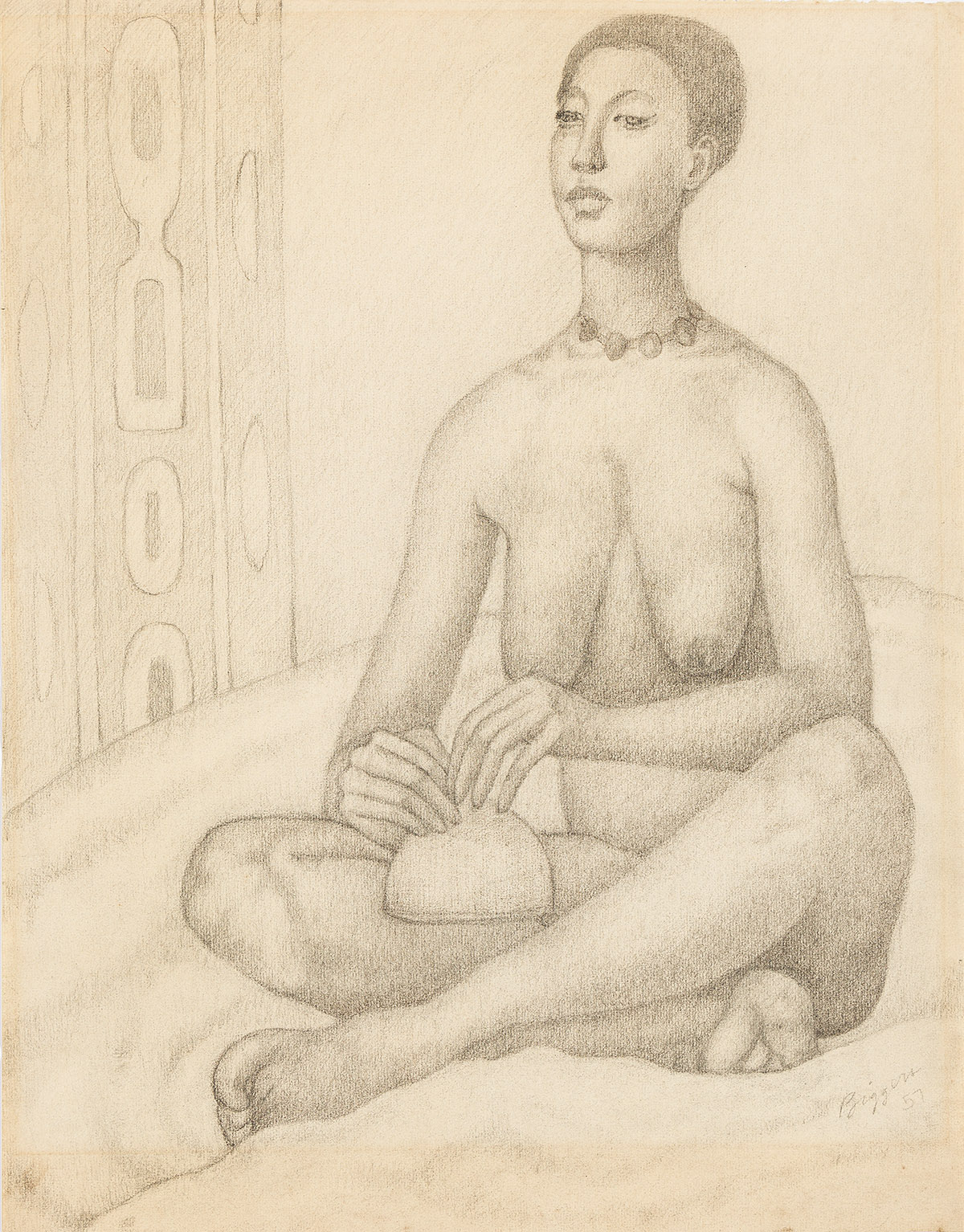
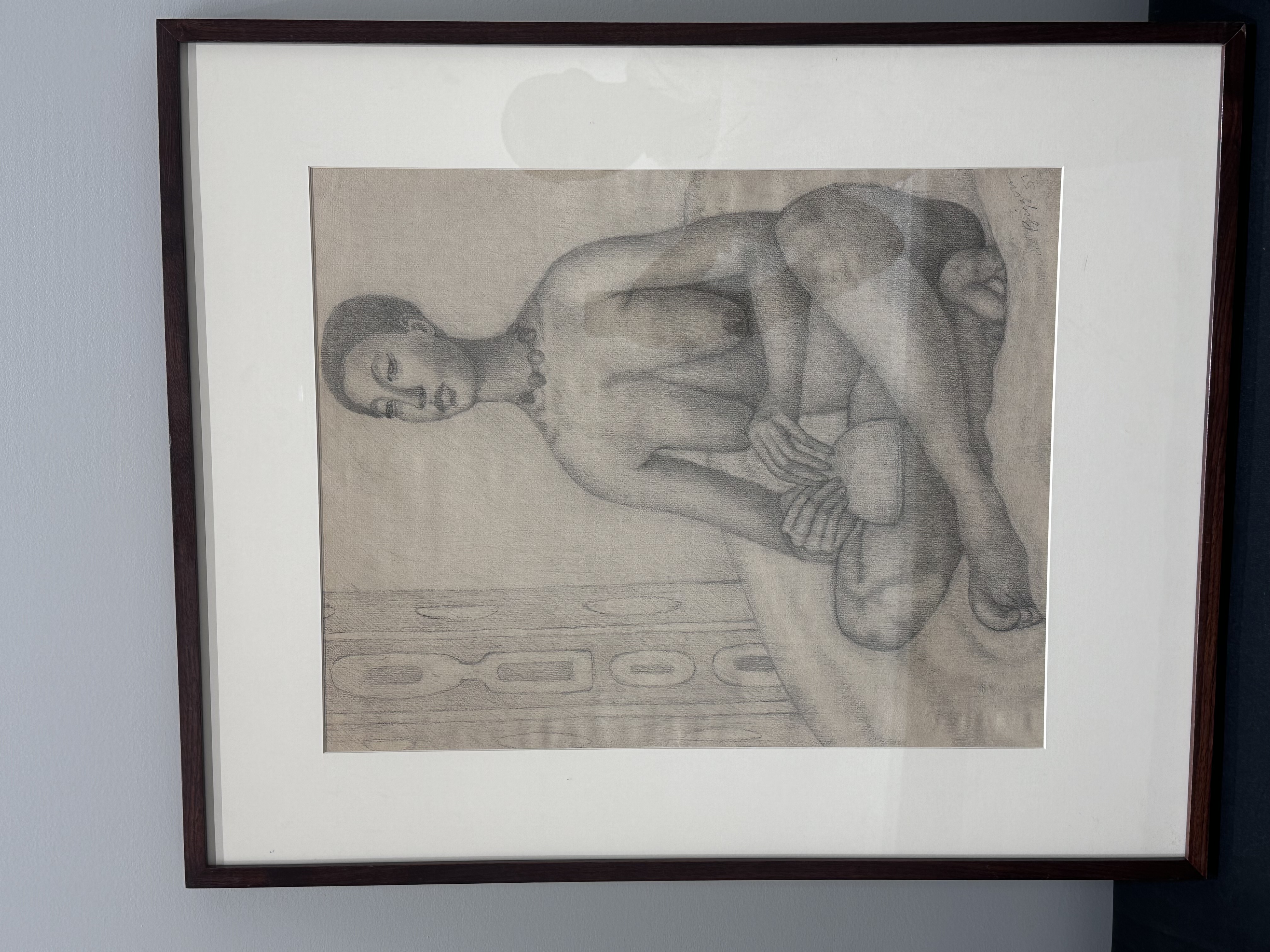
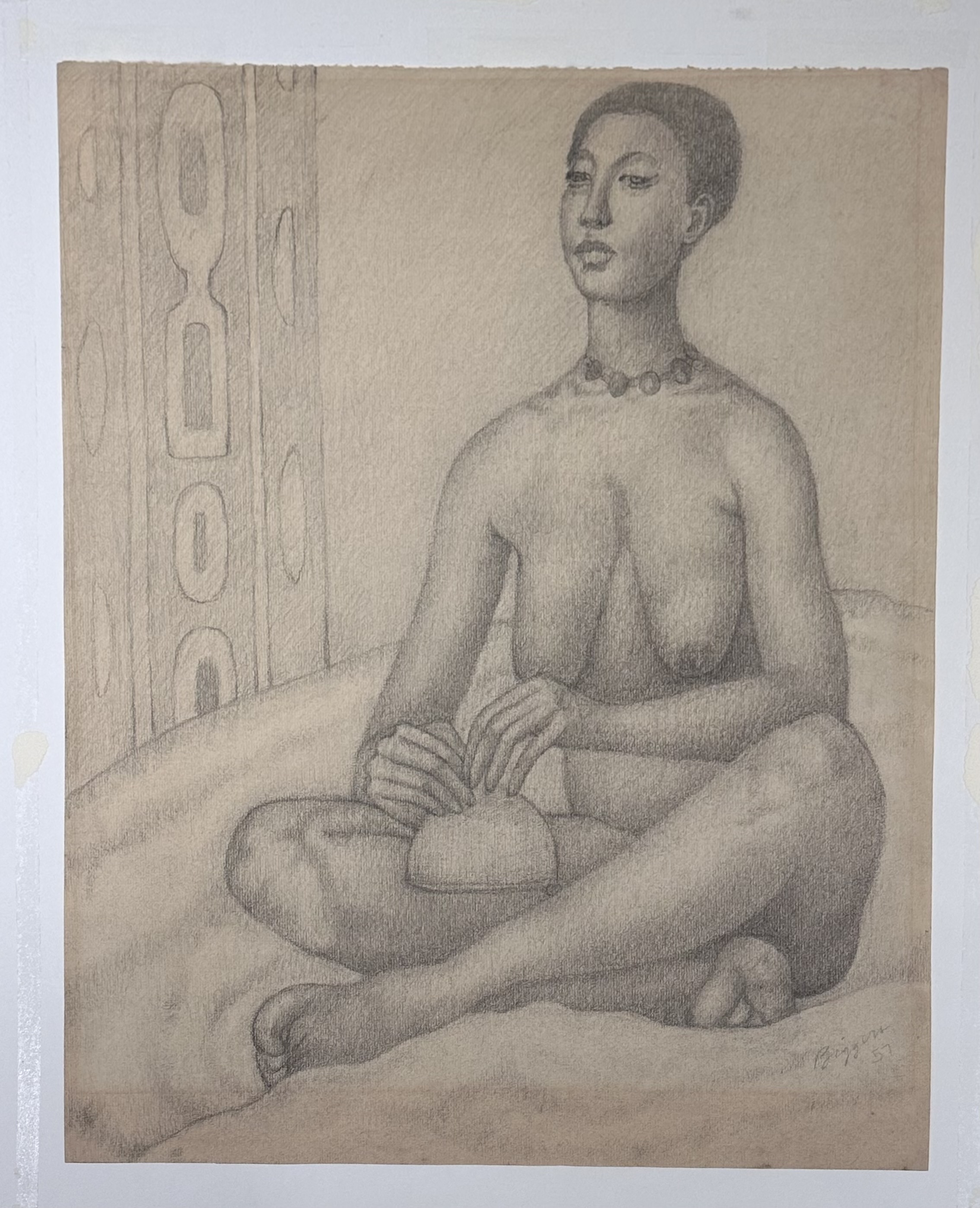
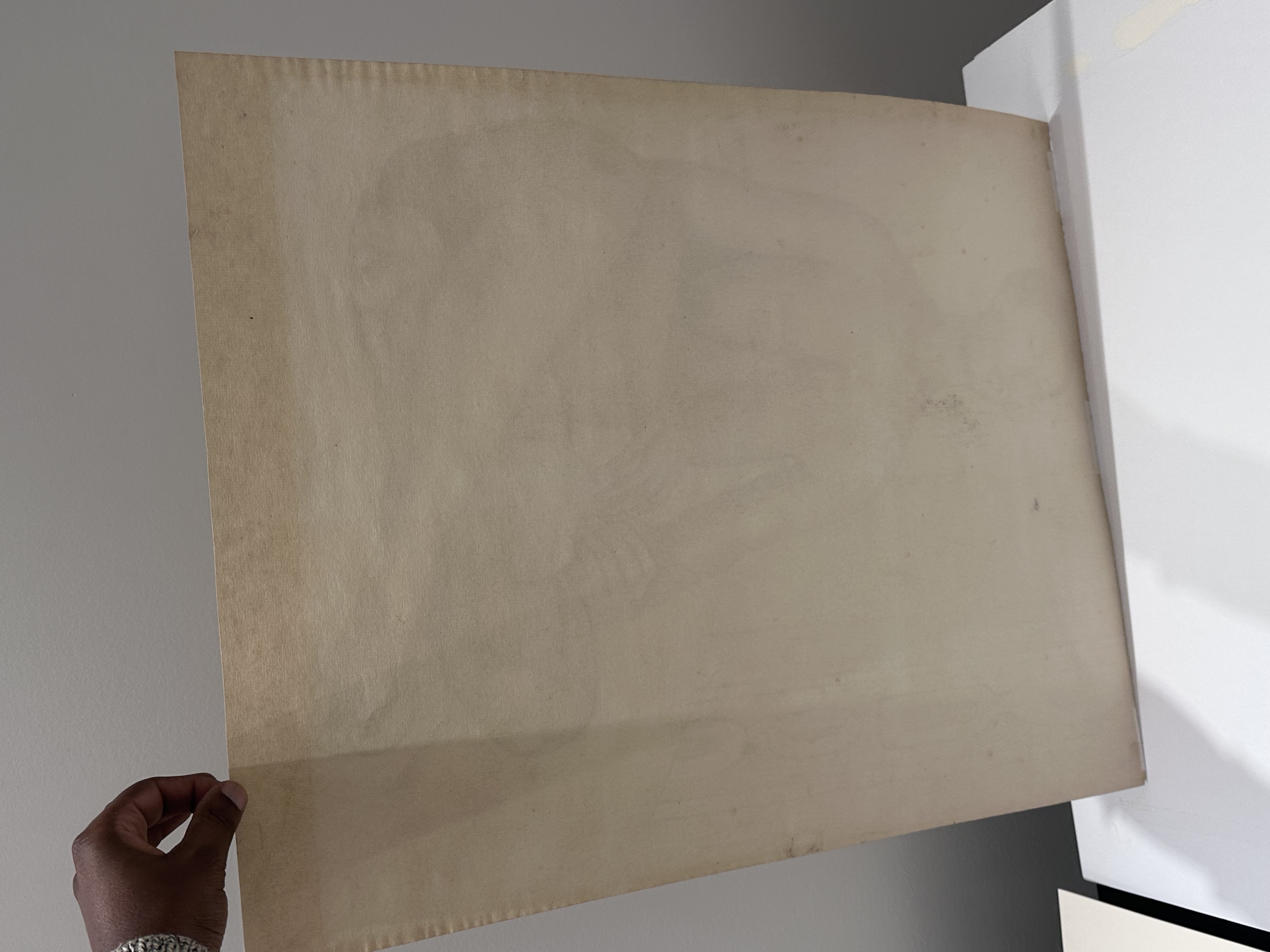








1 /
4






Sale 2649 - Lot 42
Estimate: $ 6,000 - $ 9,000
JOHN BIGGERS (1924 - 2001)
Untitled (Seated African Woman).
Graphite on buff laid paper, 1957. 610x483 mm; 24x19 inches. Signed and dated in pencil, lower right.
Provenance: the estate of Richard Dietz, Houston; private collection, Texas.
This drawing, likely from Ghana, is a very good example of John Biggers' works on paper from his African travels - one of many drawings of women. Biggers said that "Africa has a female sensibility", and "the woman was so powerful in African culture." In 1957, Biggers was one of the first African American artists to visit Africa, sponsored by a UNESCO fellowship to study and record traditional African culture. In addition to Ghana, John and his wife Hazel visited Togo, the Republic of Benin and Nigeria over a six month period. Ghana had only just achieved its independence from Britain in March of that year. Biggers also illustrated eighty-three of his drawings from this African period in his book Ananse: The Web of Life in Africa published in 1962.
Untitled (Seated African Woman).
Graphite on buff laid paper, 1957. 610x483 mm; 24x19 inches. Signed and dated in pencil, lower right.
Provenance: the estate of Richard Dietz, Houston; private collection, Texas.
This drawing, likely from Ghana, is a very good example of John Biggers' works on paper from his African travels - one of many drawings of women. Biggers said that "Africa has a female sensibility", and "the woman was so powerful in African culture." In 1957, Biggers was one of the first African American artists to visit Africa, sponsored by a UNESCO fellowship to study and record traditional African culture. In addition to Ghana, John and his wife Hazel visited Togo, the Republic of Benin and Nigeria over a six month period. Ghana had only just achieved its independence from Britain in March of that year. Biggers also illustrated eighty-three of his drawings from this African period in his book Ananse: The Web of Life in Africa published in 1962.





